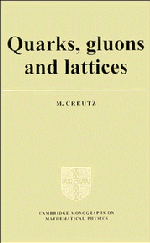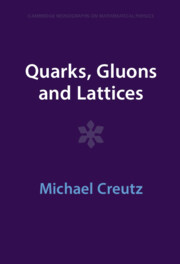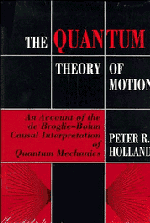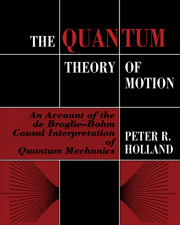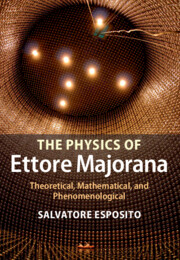Quarks, Gluons and Lattices
This book introduces the lattice approach to quantum field theory. The spectacular successes of this technique include compelling evidence that exchange of gauge gluons can confine the quarks within subnuclear matter. The lattice framework enables novel schemes for quantitative calculation and has caused considerable cross-disciplinary activity between elementary particle and solid state physicists. The treatment begins with the lattice definition of a path integral and ends on Monte Carlo simulation methods. Other topics include invariant group integration, duality, mean field theory and renormalization group techniques. The reader is assumed to have a basic background in relativistic quantum mechanics and some exposure to gauge theories.
Reviews & endorsements
'The purpose of Mike Creutz's elegant book is to provide a gentle introduction to the basic results in lattice field theory. It succeeds admirably. Without drowning the reader in detail, sufficient background is given to make the book very readable and provide an easy route to the research literature. Enough examples of calculation are given to develop real confidence in manipulating gauge groups, group integrals, duality and all the other tools of the trade. I recommend the book in the strongest terms to all interested in the fundamental structure of nature and the surprises quantum field theory has in store.' Nature
Product details
No date availableHardback
9780521244053
184 pages
228 × 152 mm
0.39kg
Table of Contents
- Preface
- 1. Quarks and gluons
- 2. Lattices
- 3. Path integrals and statistical mechanics
- 4. Scalar fields
- 5. Fermions
- 6. Gauge fields
- 7. Lattice gauge theory
- 8. Group integration
- 9. Gauge-invariance and order parameters
- 10. Strong coupling
- 11. Weak coupling
- 12. Renormalization and the continuum limit
- 13. Asymptotic freedom and dimensional transmutation
- 14. Mean field theory
- 15. The Hamiltonian approach
- 16. Discrete groups and duality
- 17. Migdal-Kadanoff recursion relations
- 18. Monte Carlo simulation I: the method
- 19. Monte Carlo simulation II: measuring observables
- 20. Beyond the Wilson action
- References
- Index.

